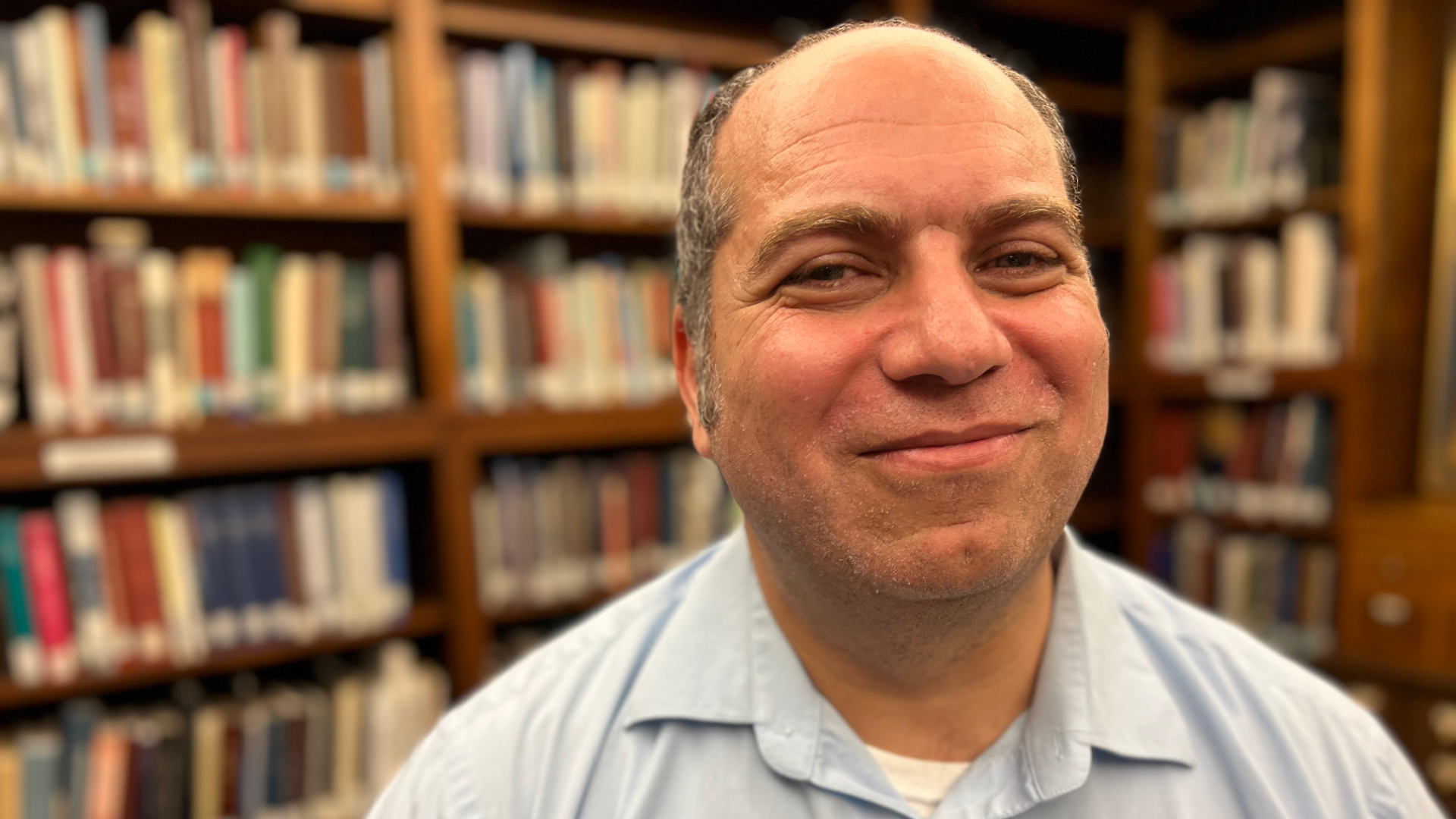
Associate Professor Chafic Bou-Saba and his students are building a facial recognition software program that can defect when students might need help.
When Guilford Associate Professor Chafic Bou-Saba (above) wants to measure whether his Computer Technology Information Systems students understand what he’s trying to teach in class, he has to rely heavily on the students approaching him with questions and concerns.
Chafic is hoping the combination of Artificial Intelligence and facial recognition research he’s conducting with Guilford students might lead to dramatic improvement in the classroom experience of his students and others.
Chafic and three students are building a software program that, when complete, will detect when students are bored, distracted or confused by assessing their facial expressions to determine attentiveness and how they’re interacting with educational content.
“When you’re in a classroom in (real time) it’s not easy picking up on every student and understanding if they are getting the concepts,” says Chafic, who teaches various CTIS courses at Guilford. “We want to see if there’s a way to track students' (facial) responses with how they are learning in class.”
Chafic’s research, which began last spring and is still in its early stages, was presented during Thursday’s Guilford College Innovation and Engagement Forum. More than 70 attendees discussed the ethics and impact of AI technology on businesses, local government and education.
Facial recognition is a type of AI-powered technology that works by analyzing and identifying an individual’s unique facial features. Chafic says face recognition software extracts unique features – such as the space between your eyes or the curve of your cheekbones – and compares this data to a stored database for recognition or verification.
The technology has found widespread adoption in security, surveillance and access control, as well as mobile technology, where it’s already widely used for unlocking cell phones, verifying payments and sorting photos.
The idea of using facial recognition in a classroom came to Chafic last year while he was on sabbatical. The facial recognition component is part of larger research in helping an educator use AI and facial recognition technology to take attendance, transcribe lectures for students who struggle with note taking and other tasks that take place in a classroom that might distract from teaching.
He told attendees he understands the surveillance and privacy concerns that might arise and says students would first sign consent forms to be part of the technology. “The students working on the project love the idea of using today’s latest open source technology. The goal of involving the students in such a research project is to help make them better students who comprehend more.”

Chafic’s presentation was one of many at the College’s AI forum. The day also included a discussion by innovative movie maker Walter Parkes, whose list of movies include the 1983 thriller “WarGames” and “Sneakers.” Both movies, in retrospect, were prescient to the current issues of AI technology and the gathering of digital information.
Walter spoke with President Kyle Farmbry at Thursday night’s Bryan Series (right) on the power and process behind good storytelling. Before that Walter met with Guilford students, telling them that today’s AI technology could easily produce a simple, formulaic movie that an audience might like. He says a more complex and layered AI-generated movie is still years away.
He likened today’s emerging AI technology with what he used to write the script for WarGames – an IBM Selectric Ii typewriter. A few years later, when word processors replaced typewriters, Walter says there was an adjustment period but it was “liberating and life-changing for writers.”
He says today’s creative students will need to find their own ways to strike a balance between working with AI and their own creative talents. “Each generation faces those issues. I’m pretty confident (today’s students) will figure that out just like we did with our new technology.”

